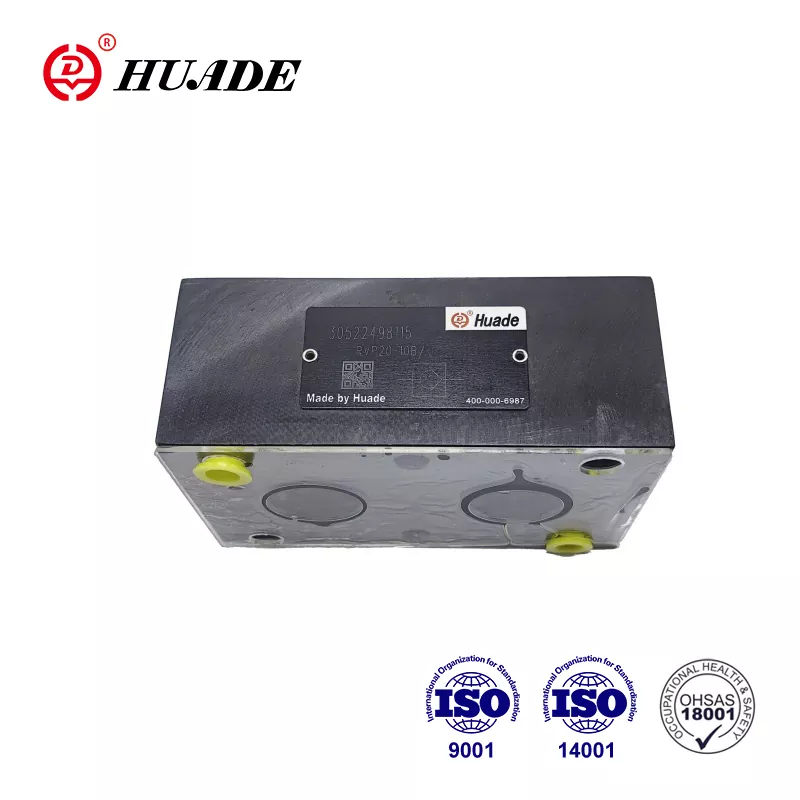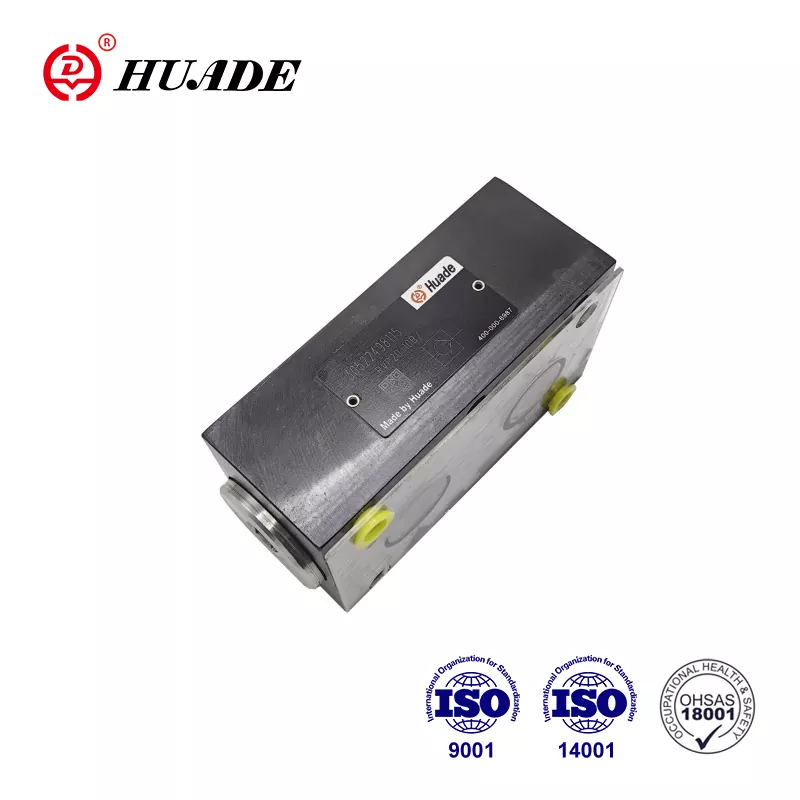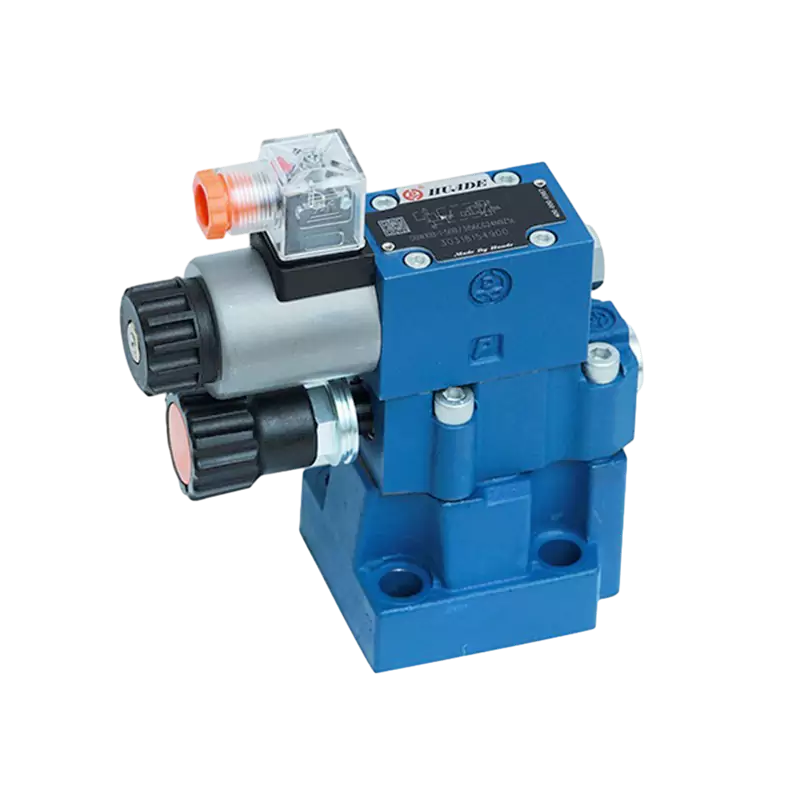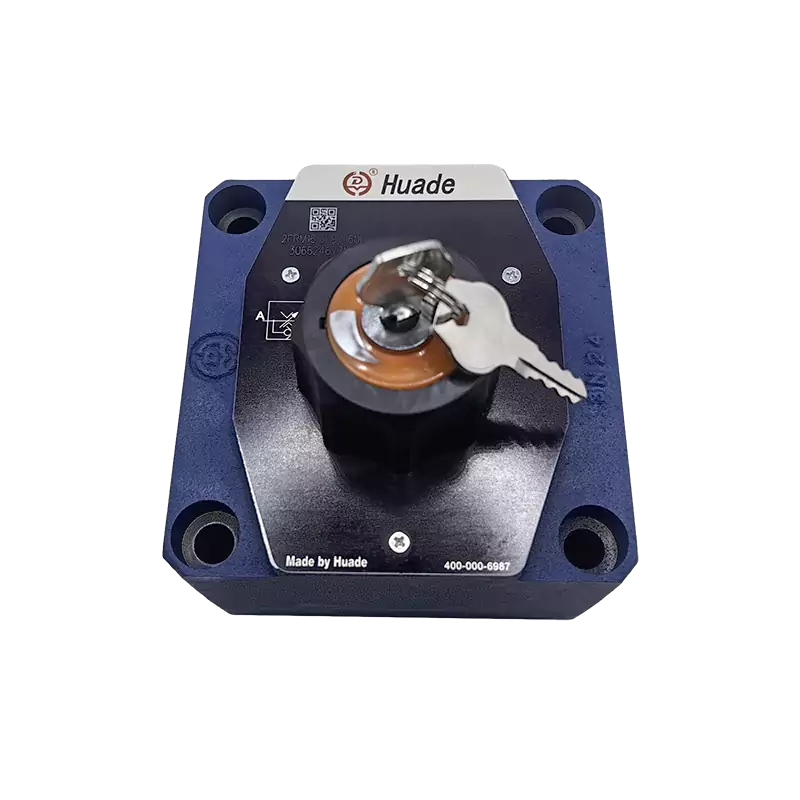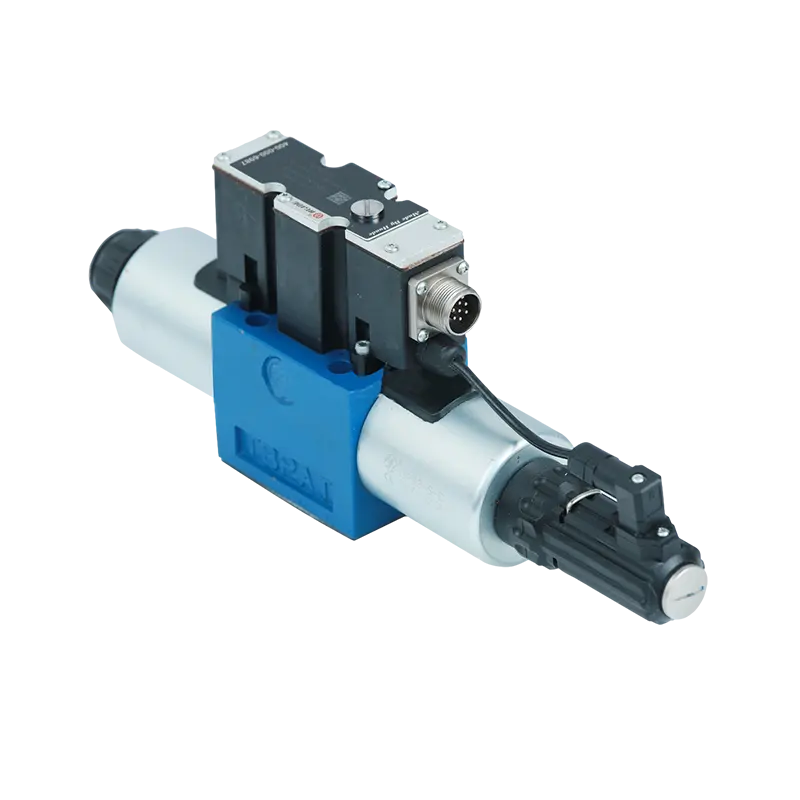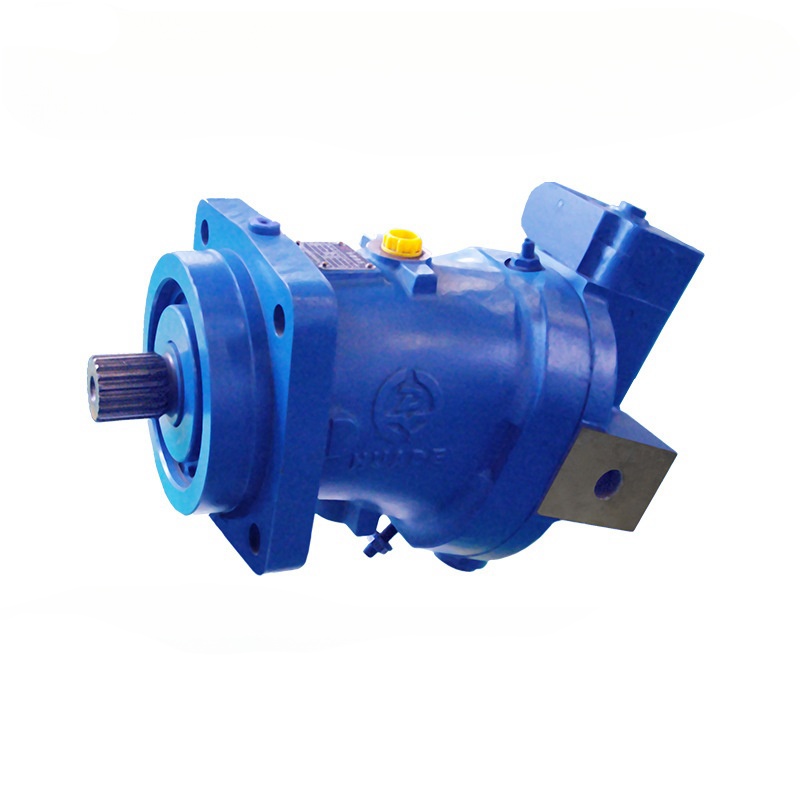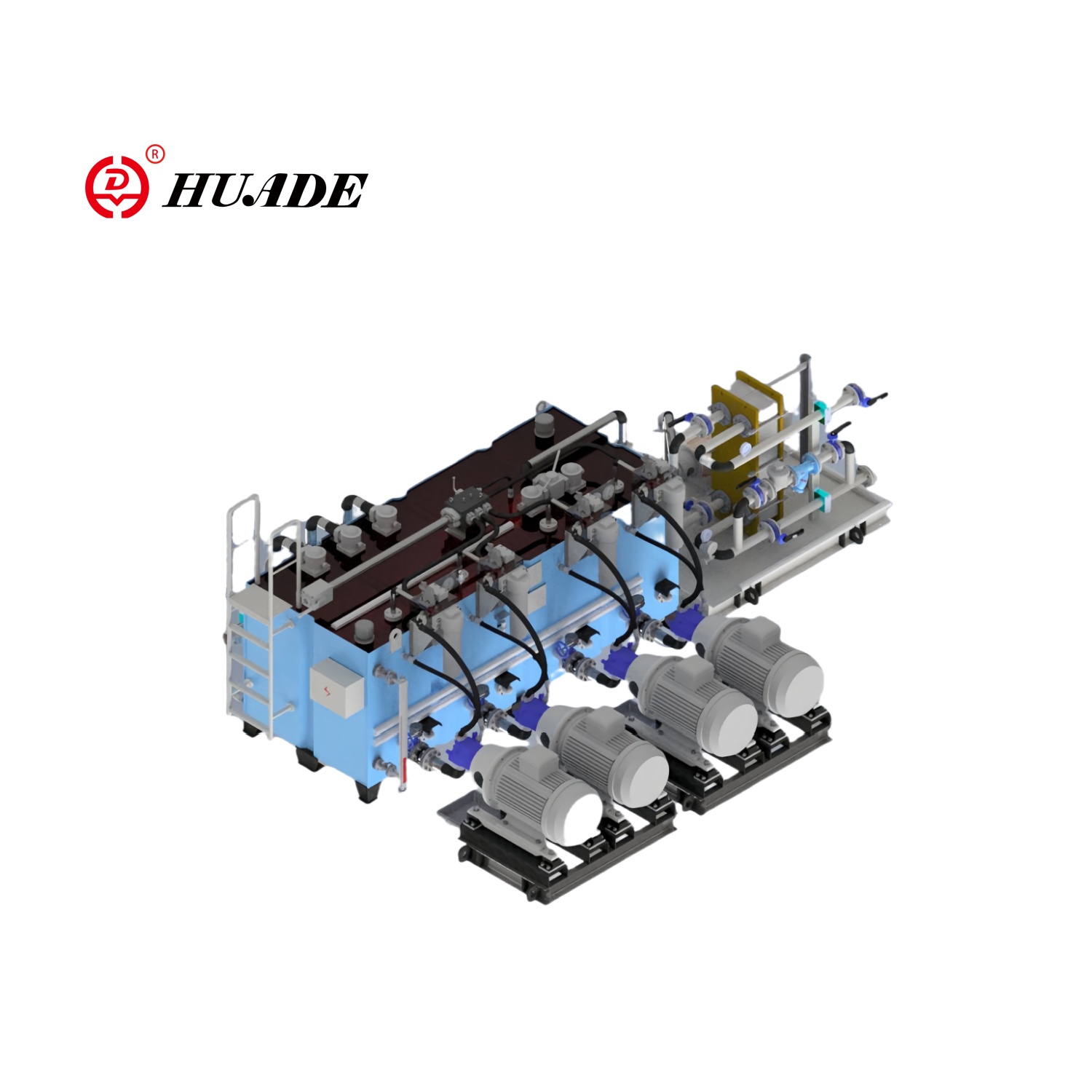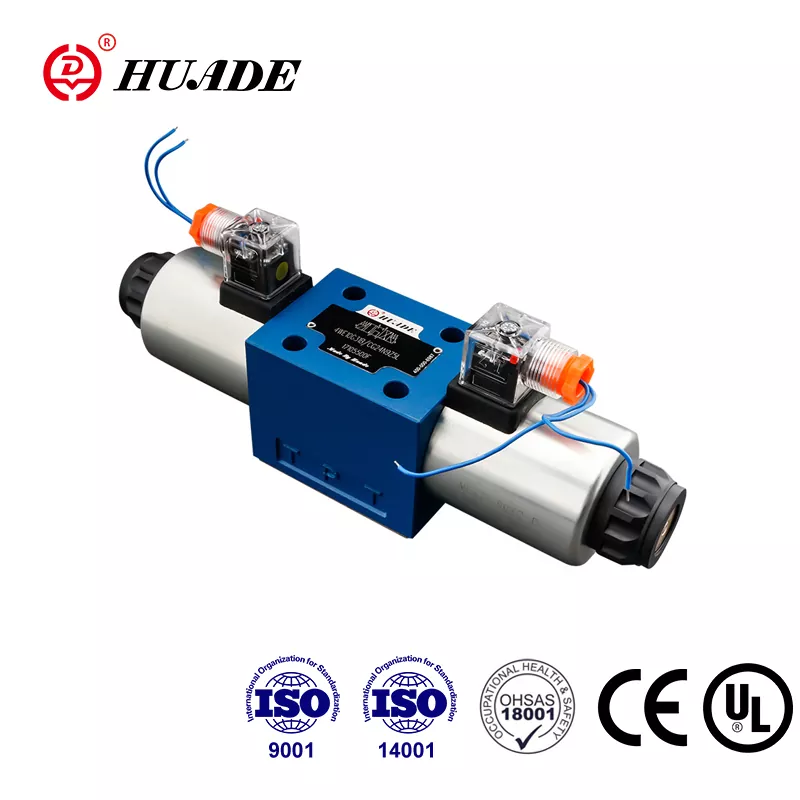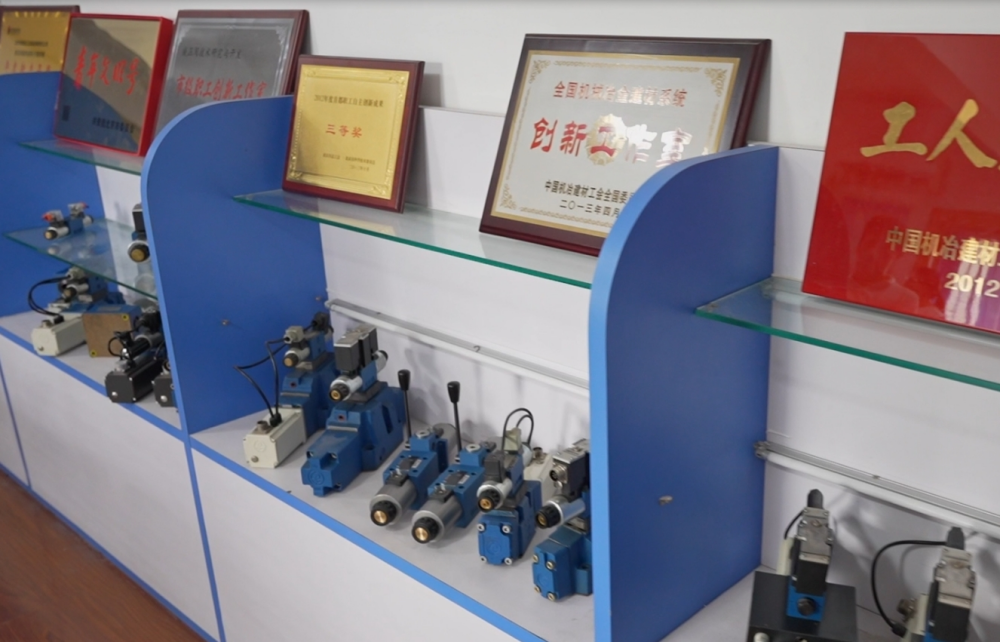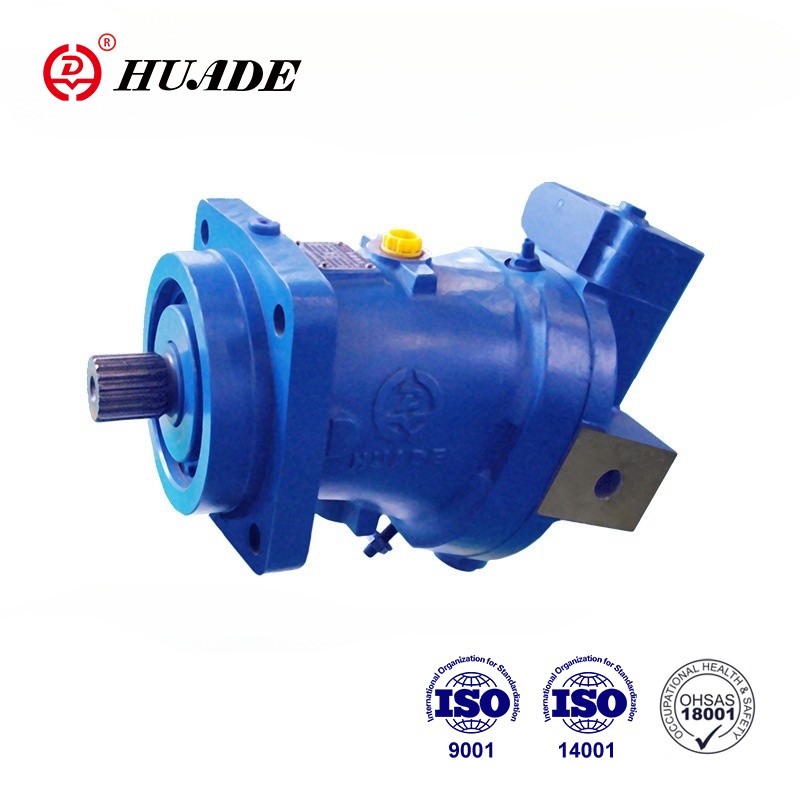When working with hydraulic systems, controlling fluid flow direction is essential for safety and efficiency. The Check Valve RVP-20 is a plate-mounted hydraulic component designed to allow fluid to flow in one direction while preventing backflow. This guide explains what makes the RVP-20 valuable for hydraulic applications and how it works in real-world situations.
What Is the Check Valve RVP-20?
The Check Valve RVP-20 is a spring-loaded valve manufactured by HYDAC, a German company specializing in hydraulic solutions. This valve uses a cone-shaped poppet design that creates a leak-free seal when fluid tries to flow backward. The "20" in its name indicates it's sized for medium flow applications, equivalent to a 1-inch pipe connection in the -16 series.
The valve allows free flow from port B to port A while blocking reverse flow completely. When fluid pressure overcomes the spring force (typically 0.5 bar), the cone moves back and lets fluid pass through. When pressure drops or reverses, the spring quickly pushes the cone back against its seat, stopping any backward movement. This simple mechanical action happens without electrical power or external control.
The Check Valve RVP-20 weighs approximately 3.3 kg and features a compact plate-mounting design that fits directly onto valve blocks. This mounting style saves space compared to inline valves and makes installation more straightforward in complex hydraulic circuits.
Technical Specifications and Performance
The Check Valve RVP-20 handles maximum working pressure up to 350 bar (5,000 psi) and flows up to 350 liters per minute (150 gpm). These specifications make it suitable for medium-duty hydraulic systems found in construction equipment and industrial machinery. The valve maintains its performance across a temperature range from -20°C to +80°C, covering most operating environments.
The cracking pressure for the standard Check Valve RVP-20 is 0.5 bar, meaning fluid needs only minimal pressure to open the valve for forward flow. Custom versions with 1 bar or higher cracking pressures are available when applications require more resistance to opening. The pressure drop across the valve increases with flow rate—at 200 liters per minute, expect around 2 bar of pressure loss, while at maximum flow of 350 liters per minute, pressure drop can reach 4 to 8 bar.
The valve body consists of phosphated steel with options for zinc coating, while the cone and seat are made from hardened and ground steel for durability. FKM seals provide chemical resistance and work with mineral oil hydraulic fluids having viscosity between 2.8 and 800 mm²/s. The design follows DIN ISO 1219 standards and is tested with mineral oils meeting DIN 51524 specifications.
How the Check Valve RVP-20 Works
Understanding the operation of the Check Valve RVP-20 helps explain why it's effective in hydraulic systems. The valve contains a spring-loaded cone that sits against a precision-machined seat. In the closed position, the spring holds this cone tightly against the seat, creating a metal-to-metal seal that prevents any fluid from passing backward.
When fluid enters from port B with sufficient pressure, it pushes against the cone surface. Once pressure exceeds the spring force, the cone shifts backward, opening a path for fluid to flow toward port A. The cone stays open as long as forward pressure continues. During this open state, the Check Valve RVP-20 creates relatively low resistance, allowing efficient fluid movement through the system.
If pressure equalizes or reverses, the spring immediately pushes the cone back to its closed position. This rapid closure prevents backflow and protects upstream components from pressure spikes or reverse rotation. The cone design ensures the valve seats properly every time without requiring adjustment or maintenance of the closing mechanism.
Installation Dimensions and Mounting
The Check Valve RVP-20 uses a standardized plate-mounting pattern that fits SAE, BSPP, and NPTF port configurations. The mounting face measures 76.5 mm wide with ports spaced 60 mm apart. The overall length of the valve is 133 mm, with a base height of 127 mm. These compact dimensions allow the Check Valve RVP-20 to fit into tight spaces within hydraulic manifolds.
Installation requires M10 bolts torqued to 20-30 Nm. The mounting surface should have a roughness of 0.8 μm or smoother to ensure proper sealing. The valve can be mounted in any orientation without affecting performance, giving designers flexibility when creating hydraulic circuits. Port threads extend 16 mm deep, and the flange thickness measures 19 mm.
When installing the Check Valve RVP-20, verify that the flow direction matches the arrow marking on the valve body. Port B should connect to the pressure source, while port A connects to the protected circuit. Using the correct bolt grade (10.9 or higher) prevents fastener failure under vibration and pressure cycling.
Common Applications for Check Valve RVP-20
Mobile machinery represents a major application area for the Check Valve RVP-20. Excavators use these valves at hydraulic pump outlets to maintain backpressure and prevent pressure surges when boom movements stop suddenly. Rollers and compactors benefit from the valve's ability to isolate hydraulic circuits, improving safety during equipment operation.
Industrial automation systems rely on the Check Valve RVP-20 for cylinder locking and pressure maintenance. Injection molding machines use these valves to ensure stable injection pressure, which reduces defects and downtime by 20-30% according to field reports. Assembly line hydraulic systems use the valves to prevent unintended movement when circuits are depressurized.
Marine and offshore applications take advantage of the Check Valve RVP-20's corrosion-resistant materials and reliable sealing. Valve actuators on ships and oil platforms use these check valves for directional isolation. High-pressure lubrication systems and hydraulic clamping fixtures also incorporate the RVP-20 where backflow prevention is critical for system integrity.
The valve works best in low to medium frequency cycling applications. For systems with constant high-frequency operation, the repeated opening and closing can accelerate wear on the cone and seat surfaces. In such cases, considering alternative valve designs or more frequent maintenance intervals becomes important.
Maintenance and Service Life
The Check Valve RVP-20 requires minimal maintenance under normal operating conditions. HYDAC rates the mean time to failure (MTTF_d) at 150 years under ideal conditions, though actual service life depends heavily on fluid cleanliness and operating environment. Annual inspections or checks every 1,000 operating hours help identify wear before failures occur.
Key maintenance tasks include inspecting seals for damage or deterioration and monitoring pressure drop across the valve. If pressure drop increases by more than 10% from baseline measurements, internal wear or contamination may be affecting performance. Seal replacement kits (part number 555094) are available for periodic service.
When servicing the Check Valve RVP-20, completely isolate the hydraulic circuit and relieve all pressure before removing the valve. After reassembly, perform a leak test at 1.5 times the working pressure to verify seal integrity. Maintaining proper fluid filtration (20 μm or finer) significantly extends valve life by preventing abrasive particles from damaging sealing surfaces.
Keeping hydraulic fluid clean and within the specified viscosity range prevents most common problems with the Check Valve RVP-20. Contamination causes about 80% of hydraulic component failures, so investing in quality filtration and regular fluid analysis pays off through extended component life and reduced downtime.
Comparing Check Valve RVP-20 to Similar Models
Within the HYDAC RV/RVP series, the Check Valve RVP-20 sits between smaller and larger models. The RVP-16 handles flows up to 200 liters per minute and weighs 2.1 kg, making it suitable for lighter-duty applications. The RVP-25 increases capacity to 550 liters per minute but weighs 5.8 kg, better suited for heavy industrial systems. All three models share the same 350 bar maximum pressure rating and temperature range.
Other manufacturers offer competing products with similar specifications. Bosch Rexroth's S 20 series provides integrated safety features and electrical monitoring options, with pressure ratings to 315 bar and flow capacity to 450 liters per minute. Parker Hannifin's PV series emphasizes lightweight composite materials for aerospace applications, handling 350 bar and 300 liters per minute.
Danfoss CSV series valves feature enhanced corrosion resistance and higher pressure ratings (420 bar) suited for agricultural equipment. HAWE Hydraulik BC series offers ultra-compact designs for German machinery manufacturers, with 350 bar pressure and 320 liters per minute flow. The Check Valve RVP-20 remains competitive through its proven reliability, leak-free design, and ease of integration into existing HYDAC systems.
Purchasing and Availability
The Check Valve RVP-20 carries standard part number 705937 from HYDAC. Purchasing through authorized distributors ensures genuine parts and technical support. Major distributors include ValinOnline and Leader Hydraulics, who stock the valve and related seal kits. Lead times vary by region but typically range from immediate availability to 2-4 weeks for standard configurations.
Custom versions of the Check Valve RVP-20 with different cracking pressures or special seals require longer lead times, usually 6-8 weeks. When ordering custom specifications, provide complete system requirements including working pressure, flow rate, fluid type, and temperature range. This information helps HYDAC engineers recommend the optimal configuration.
Used or refurbished Check Valve RVP-20 units appear on secondary markets like eBay, often at lower prices. However, buying used hydraulic components carries risks including unknown service history and potential internal wear. If cost constraints require considering used valves, purchase only from sellers with verified reputation and request pressure testing documentation.
Best Practices for Check Valve RVP-20 Integration
Successful integration of the Check Valve RVP-20 starts with proper system design. Calculate actual flow rates and pressure drops to ensure the valve won't create excessive resistance in the circuit. The valve works best when flow stays below 80% of maximum capacity, providing margin for pressure spikes and temperature variations.
Install an air bleed or vent filter in systems where air entrainment might occur. Trapped air can prevent the Check Valve RVP-20 from closing properly and may cause cavitation damage over time. Positioning the valve to allow air bubbles to rise and escape improves performance and longevity.
When using multiple Check Valve RVP-20 units in parallel circuits, ensure balanced flow distribution. Slight variations in cracking pressure between valves can cause uneven loading, reducing the effectiveness of the parallel arrangement. Consider using matched sets from the same production batch for critical applications.
Monitor the Check Valve RVP-20 during initial system startup and commissioning. Watch for unusual noise, excessive heat, or unexpected pressure readings that might indicate installation problems or incompatible operating conditions. Early detection of issues prevents damage to the valve and other system components.
Understanding Limitations and Considerations
While the Check Valve RVP-20 excels in many applications, recognizing its limitations prevents misapplication. The valve is not designed for high-frequency cycling where the cone opens and closes many times per minute. Such operation accelerates wear and may cause premature failure. For high-frequency applications, consider pilot-operated check valves or cartridge valves designed for dynamic service.
The spring-loaded design means the Check Valve RVP-20 always creates some pressure drop during forward flow. In circuits where minimal resistance is critical, this characteristic must factor into pump sizing and system efficiency calculations. At maximum flow, pressure drop can reach 8 bar, which converts to heat and wasted energy.
Reverse flow produces no leakage when the valve functions correctly, but contamination or wear can compromise sealing. Systems requiring absolute zero leakage for safety might need redundant valves or alternative sealing technologies. Regular testing verifies that reverse sealing remains effective throughout the valve's service life.
The Check Valve RVP-20 provides purely mechanical operation without position feedback or adjustability during operation. Applications requiring variable cracking pressure or remote control need different valve types. Understanding these fundamental characteristics helps match the valve to appropriate applications.
Conclusion
The Check Valve RVP-20 serves as a reliable solution for preventing backflow in hydraulic systems operating at pressures up to 350 bar with flows to 350 liters per minute. Its spring-loaded cone design creates leak-free reverse sealing while maintaining low forward pressure drop. The compact plate-mounting format simplifies installation in valve blocks and manifolds.
This valve finds widespread use in mobile machinery, industrial automation, and marine hydraulics where directional control matters for safety and efficiency. With proper installation, fluid cleanliness, and periodic inspection, the Check Valve RVP-20 provides many years of trouble-free service. Its standardized design and broad availability make it a practical choice for new systems and replacement applications.
When selecting a check valve for hydraulic applications, consider the Check Valve RVP-20 for medium-duty circuits requiring dependable backflow prevention. Match the valve's specifications to your system requirements, follow installation guidelines, and maintain proper fluid condition for optimal performance and longevity.
